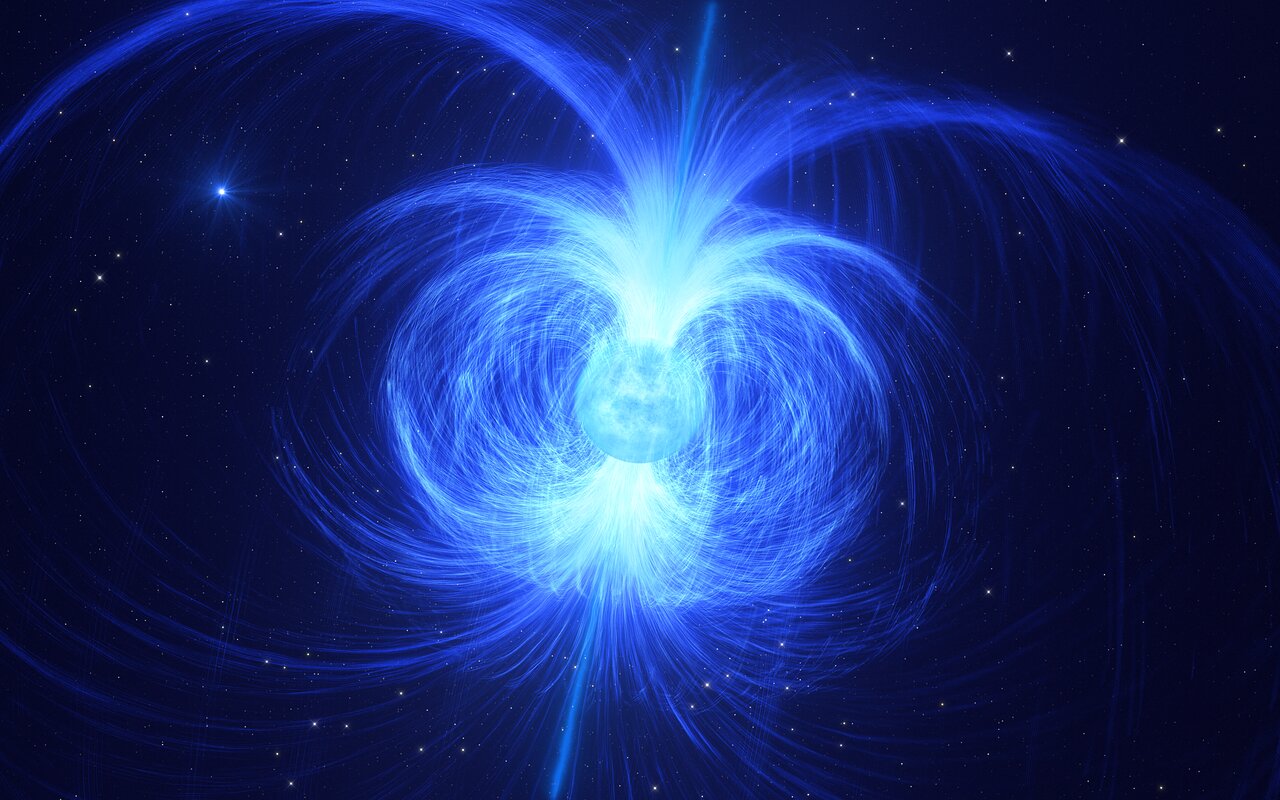Follow us on Google News (click on ☆)
The study conducted by McGill University, published in Nature, analyzed the polarization of a fast radio burst (FRB). Researchers observed rapid angular variations, typical of pulsars, suggesting an origin near a neutron star. This discovery challenges current theoretical models about FRBs.

ESO Image
FRBs release in milliseconds the equivalent of the Sun's energy output over an entire day. The CHIME telescope enabled detection of this particular signal among thousands of others. This breakthrough opens new perspectives for understanding these extreme cosmic phenomena.
Polarimetry played a crucial role in this discovery. The FRB's radio waves were strongly polarized, oscillating in a specific direction. This characteristic, combined with the source's distance, confirms the extragalactic origin hypothesis.
A complementary MIT study, also published in Nature, observed 'scintillation' in the signal. This phenomenon indicates a compact source, compatible with the intense magnetic environment of a neutron star. Both studies converge toward a common explanation.
Researchers highlight the importance of the CHIME telescope in this discovery. Its ability to detect thousands of FRBs daily enables identification of unique signals. These results mark a significant step in understanding FRBs.
Next steps will involve studying other FRBs with similar characteristics. Scientists hope to refine their understanding of the underlying mechanisms. This research could also shed light on other cosmic mysteries related to neutron stars.
What is a fast radio burst (FRB)?
Fast radio bursts are extremely brief and intense cosmic radio emissions. Lasting just milliseconds, they release as much energy as the Sun does in a day.
Discovered in 2007, their origin long remained mysterious. FRBs can be repetitive or one-off, suggesting different mechanisms. Their study provides clues about extreme cosmic environments.
FRBs are detected at cosmological distances, sometimes billions of light-years away. Their propagation through intergalactic space allows study of diffuse matter between galaxies. These signals are thus valuable tools for mapping the Universe.
Recent research points to neutron stars as likely sources. Magnetars, a type of neutron star with an intense magnetic field, are particularly suspected. These discoveries open new avenues for understanding these extreme objects.
How does polarimetry help study FRBs?
Polarimetry measures the orientation of emitted radio waves. This technique reveals information about the source's environment and emission mechanism.
Radio waves can be linearly or circularly polarized. Linear polarization dominates in FRBs, indicating a strong and organized magnetic field. These characteristics are typical of neutron stars.
The rapid variations in polarization angle observed in this study are particularly revealing. They suggest emission near the neutron star's surface. This behavior is similar to pulsars, but with much greater intensity.
Polarimetry thus helps distinguish FRBs from other radio sources. It also provides valuable constraints for theoretical models. This technique will be crucial for future FRB studies.